


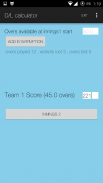

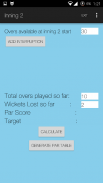
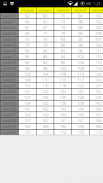
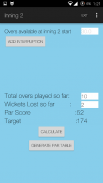
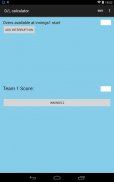
DL Calculator

DL Calculator介绍
"The Duckworth–Lewis method is a mathematical formulation designed to calculate the target score for the team batting second in a limited overs cricket match interrupted by weather or other circumstances. It is generally accepted to be the most accurate method of setting a target score.
The basic principle is that each team in a limited-overs match has two resources available with which to score runs: wickets remaining, and overs to play. Where overs are lost, setting an adjusted target for the team batting second is not as simple as reducing the run target proportionally to the loss in overs, because a team with ten wickets in hand and 25 overs to bat can be expected to play more aggressively than if they had ten wickets and a full 50 overs, for example, and can consequently achieve a higher run rate. The Duckworth–Lewis method is an attempt to set a statistically fair target for the second teams innings, based on the score achieved by the first team, taking their wickets lost and overs played into account.The D/L method is not in direct proportion to the number of overs available to be faced, as with the average run rate method of correction. Instead they depend on how many overs are to go and how many wickets are down when the interruptions occur. "
“在达克沃斯 - 刘易斯的方法是设计用来计算目标得分为球队击球第二次在有限旁白板球比赛因天气或其他原因中断的数学公式,它被普遍接受的是设定一个目标分数的最准确的方法。
其基本原理是,在有限的接管比赛每队有两个可用资源与得分奔跑:围墙门之余,并接管玩。当旁白丢失,设置一个调整的目标,为球队击球第二个是不是那么简单,降低了运行的目标比例在接管的损失,因为一队十小门在手和25旁白蝙蝠可以预期发挥更积极比,如果他们有10个小门和一个全50接管,例如,并且可以从而达到较高的运行速度。所述达克沃斯-刘易斯方法是试图设置一个统计学公平目标为第二队的局,基于由所述第一队取得的得分,以他们的售票窗口丢失和接管播放到account.The D / L-方法并不成正比到可用的接管的数量要面对,与校正的平均运行速度的方法。相反,他们依赖于有多少旁白都是要多少售票窗口已关闭时,中断发生。 “

























